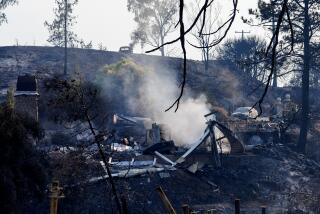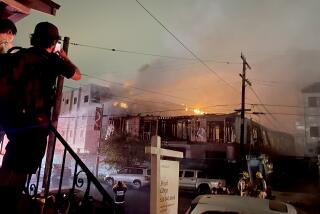What caused the deadly Ghost Ship fire? Officials aren’t saying, but attorneys have unexpected theory

The city’s planning and building department only goes into buildings when the owner seeks a permit or if officials receive a complaint.
In the nearly two months since 36 people died in a warehouse fire in Oakland, one central question remains unanswered: What caused the worst fire in modern California history?
Investigators with the U.S. Bureau of Alcohol, Tobacco, Firearms and Explosives probed the burned remains of the Ghost Ship but have not yet offered an explanation of what sparked the blaze and why it was so deadly.
Jill Snyder, special agent in charge of the ATF in San Francisco, has said there is no evidence that it was intentionally set and, despite initial reports, it was not started by a faulty refrigerator.
Residents and others who were inside the warehouse described it as a firetrap filled with debris and powered by makeshift wiring.
But on Monday, lawyers for the manager of the Ghost Ship made an unexpected claim: The fire did not start in the artists’ collective but in a neighboring structure.
Derick Ion Almena’s legal team, led by prominent attorney J. Tony Serra, issued a 10-page report saying the fire didn’t begin inside the warehouse.
Almena has been the focus of much scrutiny and criticism since the fire, which the Alameda district attorney’s office has opened a criminal investigation.
It’s hard to know how scientific the attorneys’ report is, but it does offer a window into Almena’s defense.
The defense attorney’s report said there is no direct utility connection from the power company into the part of the Ghost Ship where the fire is believed to have started. The report included photos that appear to show the fire is visible in an adjacent building.
Alameda County prosecutors said the investigation is ongoing.
“We have three attorneys and three inspectors working on this matter,” said Teresa Drenick, a spokeswoman, adding that pending its completion they won’t address the specifics of the probe.
ATF officials on Monday referred all comments to Alameda County prosecutors and the Oakland Fire Department, which is also investigating.
Until now, officials have never suggested the fire started outside the Ghost Ship.
In the aftermath of the fire, Almena told NBC’s “Today” show he was “incredibly sorry… Everything I did was to make this a stronger, more beautiful community.”
The Ghost Ship warehouse was owned by Oakland resident Chor N. Ng’s trust and zoned exclusively for commercial use. But former residents and visitors have said the warehouse housed an artists’ collective and unpermitted living quarters inside, and hosted concerts and other events.
Tenants and visitors to the warehouse before the blaze have described its electrical power source as coming from another building with it lacking sprinklers and filled with debris, trash and old furniture.
Photos from inside the building show a vast tangle of electrical wires as well as a heating system that appeared to be hooked to portable propane generators. The building had not been inspected by city building inspectors in 30 years.
Almena’s defense team said he should not be blamed for the fire and that he could face charges to divert attention from the failure of Oakland officials to inspect and fix the Ghost Ship.
Oakland City Hall has faced heavy criticism for what some consider lax inspection records, even though it received warnings about the conditions in the warehouse.
Twitter: @lacrimes
ALSO
Lawyers for Ghost Ship manager say they fear he will be charged to hide government negligence
Long Beach police fatally shoot armed suspect after hours-long standoff
Emergency crews work to recover two bodies submerged after weekend California storms
More to Read
Sign up for Essential California
The most important California stories and recommendations in your inbox every morning.
You may occasionally receive promotional content from the Los Angeles Times.










